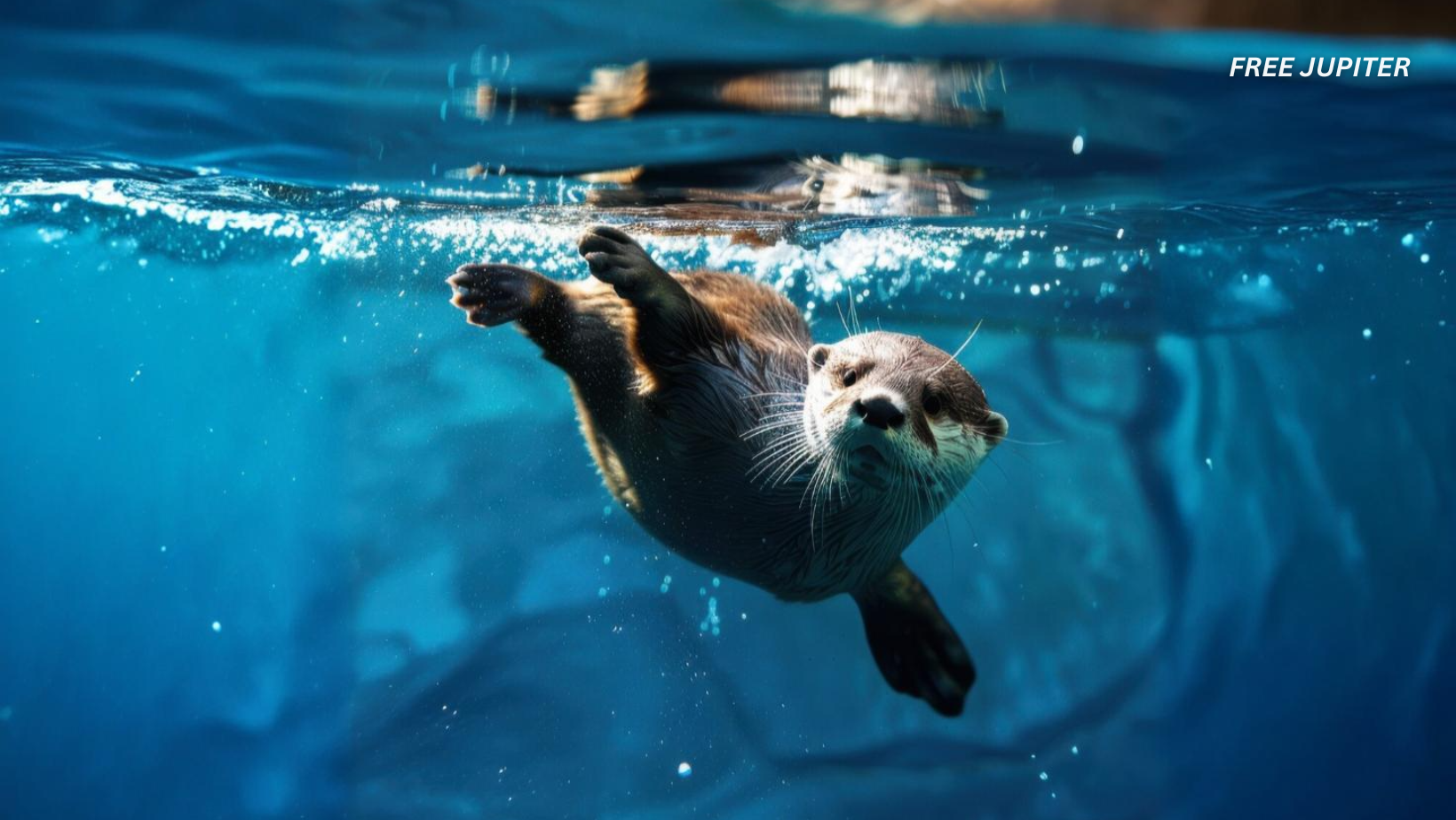Friendly Note: FreeJupiter.com shares general info for curious minds 🌟 Please fact-check all claims—and always check health matters with a professional 💙
Along the rugged Pacific coast, a whiskered mammal has been quietly rewriting the rules of ocean recovery. Sea otters, once nearly erased from their habitats, have staged a remarkable return-and in doing so, they’ve set off a chain reaction that’s transforming underwater forests and the creatures that depend on them.
Kelp Forests: More Than Just Seaweed
Kelp forests are not your average marine greenery. These towering underwater plants create a bustling metropolis for fish, invertebrates, and countless other organisms. Their leafy canopies shelter young marine life, stabilize shorelines, and even play a role in capturing carbon from the atmosphere. In short, kelp forests are the unsung heroes of coastal ecosystems.
But these vital habitats face a persistent threat: sea urchins. Left unchecked, these spiny grazers can mow down kelp, turning lush forests into barren wastelands-what scientists call “urchin barrens”.
The Otter Effect: A Natural Balancing Act
Here’s where sea otters enter the scene. With a voracious appetite for sea urchins, otters act as natural regulators, keeping urchin numbers in check and allowing kelp to flourish. Their presence-or absence-can tip the scales dramatically.
Recent research has taken this understanding to a new level. By piecing together decades of data, scientists have created what amounts to a time-lapse movie of life in the kelp forests. This “movie” reveals how the return of sea otters sparks a cascade of positive changes, breathing new life into once-devastated habitats.
A Tale of Two Coasts: British Columbia and Southern California
To dig deeper, researchers focused on two distinct regions: British Columbia and Southern California. Both areas saw sea otter reintroductions after local populations had vanished. The results were striking. In British Columbia, kelp forests bounced back with impressive speed. In Southern California, the recovery was slower, hampered by more intense competition among otters, urchins, and kelp.
This difference highlights the complex dance of species interactions. Where otters return, urchin populations dwindle, kelp regrows, and the entire ecosystem becomes more resilient. But local conditions-such as the number of competing species and the extent of previous habitat damage-can influence just how quickly this recovery unfolds.
Crunching the Numbers: A Century of Change
The story doesn’t stop at local snapshots. Scientists have now analyzed over a hundred years of kelp forest data, stretching from 1910 to 2016. Their findings are both sobering and hopeful.
- Along California’s central coast, where otters made their comeback, kelp canopy coverage surged by 56 percent.
- In contrast, northern and southern parts of the state-where otters remained absent-saw kelp coverage plummet by 63 and 52 percent, respectively.
- Despite these regional swings, the overall decline in California’s kelp canopy was just six percent over the century, thanks in large part to the otters’ influence.
What stood out most? The density of sea otters emerged as the single strongest predictor of kelp forest health. Where otters thrived, kelp did too.
Why Kelp Forests Matter (and Why Otters Are Their Champions)
Kelp forests aren’t just pretty underwater scenery. They provide nursery grounds for countless marine species, help buffer coastlines from erosion, and lock away significant amounts of carbon-a crucial service in a warming world. When these forests vanish, the loss ripples outward, affecting everything from fisheries to coastal communities.
Sea otters, by curbing urchin populations, act as ecosystem engineers. Their impact goes beyond kelp: healthier forests mean more food and shelter for fish, crabs, and even seabirds. This web of connections underscores why otters are considered a “keystone species”-removing them can unravel the entire ecosystem.
The Science Behind the Scenes: How Researchers Unraveled the Otter-Kelp Connection
To reach these insights, scientists didn’t just rely on modern surveys. They dug into historical records, mapping kelp forests from the early 20th century and comparing them to today’s landscapes. They also used advanced modeling techniques, including machine learning, to tease apart the factors driving kelp forest changes.
By analyzing variables like water temperature, coastal development, and the presence of otters, they could pinpoint the unique role otters play. Time and again, otter population density emerged as the critical factor buffering kelp forests against decline-even in the face of climate stress and other challenges.
A Glimmer of Hope Amid Environmental Uncertainty
The findings offer a rare bright spot in the often gloomy world of conservation science. As ocean temperatures climb and habitats face mounting pressures, the resilience of kelp forests where otters have returned stands out as a beacon of possibility.
One researcher described the process of turning decades of survey data into a living “movie” of species interactions as “renewed hope”-a reminder that nature’s complexity can sometimes offer solutions we hadn’t imagined.
Nature’s Blueprint for Recovery: Lessons for the Future
The otter-kelp story isn’t just a quirky ecological anecdote. It hints at broader strategies for restoring damaged habitats. By reintroducing key species like otters, we may be able to jumpstart the recovery of entire ecosystems-an approach known as “trophic rewilding”.
This nature-based solution could have far-reaching benefits. Not only do healthy kelp forests support marine life and protect coastlines, but they also help fight climate change by capturing and storing carbon.
Challenges Remain: Not All Habitats Bounce Back Equally
While the otter effect is powerful, it’s not a magic wand. In places where kelp forests have been severely degraded-due to pollution, overfishing, or coastal development-even otters may struggle to restore balance. Recovery depends on a mix of factors, from local species diversity to the extent of human impact.
Still, the overall message is clear: giving nature a helping hand by restoring key species can set off positive feedback loops, making ecosystems more robust in the face of change.
A Call to Action: Protecting Otters, Restoring Forests
The resurgence of sea otters along parts of the Pacific coast is a conservation success story-but it’s also a reminder of what’s at stake. Otters remain vulnerable to threats ranging from oil spills to disease. Ensuring their survival isn’t just about protecting one charismatic species; it’s about safeguarding the entire tapestry of life that depends on healthy kelp forests.
As researchers continue to unravel the intricate ties between otters, urchins, and kelp, their work offers a hopeful blueprint for other regions grappling with habitat loss. By learning from nature’s own solutions, we may find new ways to restore balance and resilience to our changing world.
In Summary: The Power of One Species
- Sea otters, once nearly wiped out, have become unlikely heroes in the story of kelp forest recovery.
- Their appetite for sea urchins keeps these grazers in check, allowing kelp forests to regrow and thrive.
- Long-term studies reveal that otter population density is the strongest predictor of kelp forest health across California.
- Healthy kelp forests provide vital benefits, from supporting marine life to capturing carbon and protecting coastlines.
- The otter-kelp connection offers a hopeful example of how restoring key species can spark broader ecosystem recovery.
In the end, the tale of the sea otter and the kelp forest is a quirky, hopeful reminder that sometimes, the smallest players can have the biggest impact. And in a world hungry for good news, that’s a story worth celebrating.










